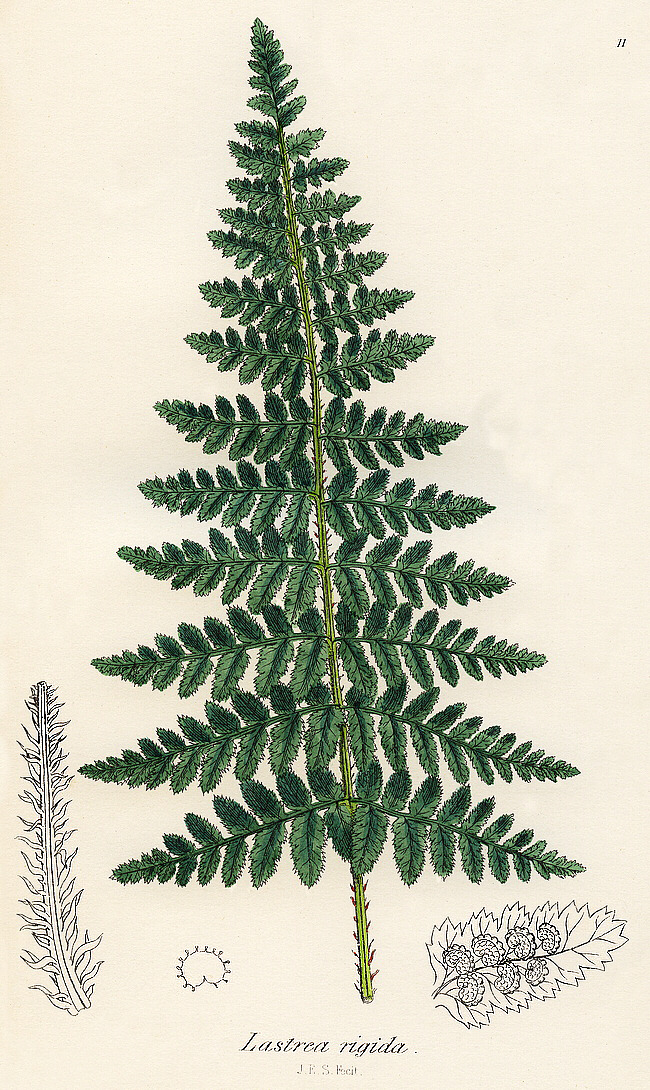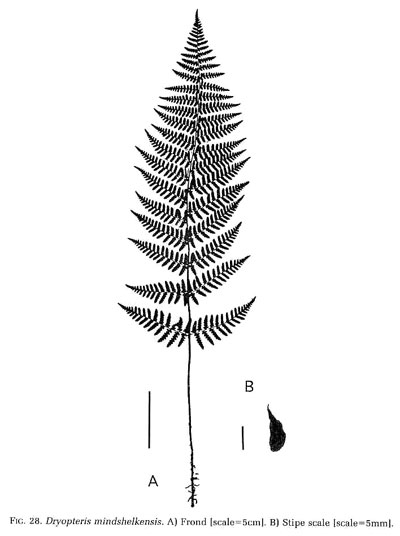| Dryopteris mindshelkensis | ||
Rigid buckler fern, limestone wood fern | ||
|
Etymology
For Mindshelke, a district in the Karatau Mountains of southern Kazakhstan and the type location.
Description
Rhizome: short-creeping, forming clumps of shuttlecocks.
Frond: 60 cm high by 15 cm wide, deciduous, monomorphic, blade/stipe ratio: 3:2. Stipe: grooved, pale brown, vascular bundles: 3-7 in a c-shaped pattern. Blade: 2-pinnate, deltate-ovate to lanceolate, stiff, somewhat leathery, distinctly mealy, grayish-green, covered with glands. Pinnae: 12 to 20 pair, lanceolate, often slightly ascending; costae grooved above, continuous from rachis to costae; margins serrate, spiny; veins free, forked. Sori: round, in 1 row between midrib and margin, indusium: reniform, pale green when young, at a sinus, sporangia: brownish, maturity: summer. Culture
Habitat: among limestone rocks.
Distribution: Spain, Algeria, east to the Caucasus and northern Iran and Kazakhstan.
Hardy to -20�C, USDA Zone 6.
Synonyms
Dryopteris submontana (Fraser-Jenk. & Jermy) Fraser-Jenk. Dryopteris villarii (Bell.) Woyn. ex Shinz. & Thell. ssp. submontana Fraser-Jenk. & Jermy Lastrea rigida (Sw.) C. Presl., misapplied Dryopteris villarii ssp. mindshelkensis (Pavlov) Fraser-Jenk. |
|
|

Dryopteris mindshelkensis. Frond, stipe indusium, pinnule. As Lastrea rigida, one of many names for this species. �Drawing by J.E.S. Fecit |
